First part, we installed required components for Cacti. In this part, we’ll install and configure Cacti.
After MySQL installation, first we should set MySQL root password.

Let’s download latest Cacti release.
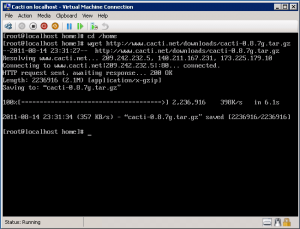
Untar tar ball.
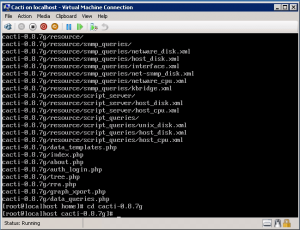
Create the MySQL database for Cacti. You have to type your root password to create database.
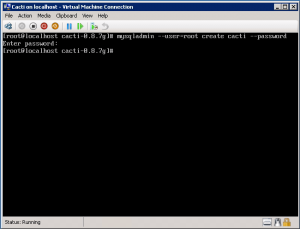
Import the default Cacti database.
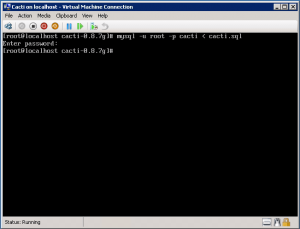
Create a MySQL username and password for Cacti for security reasons.
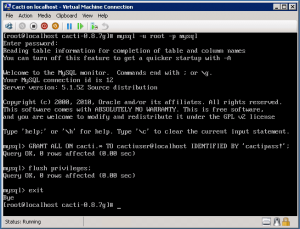
Edit “include/config.php” and specify the database type, name, host, user and password for your Cacti configuration.
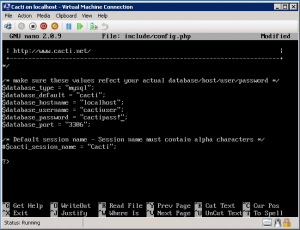
Move Cacti files into /var/www/html for web access.
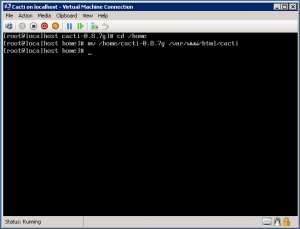
Go into Cacti directory and set the appropriate permissions for graph/log generation.
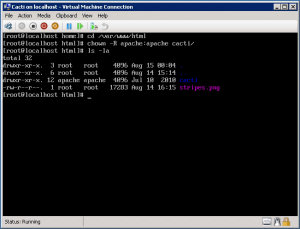
Add a line to your ”/etc/crontab” file.
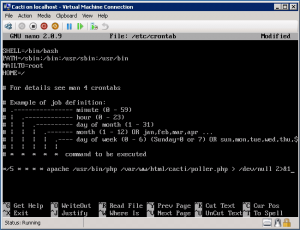
Disable SeLinux to web restrictions.

Reboot your server to apply changes. After reboot, go to php.ini configuration and change timezone.
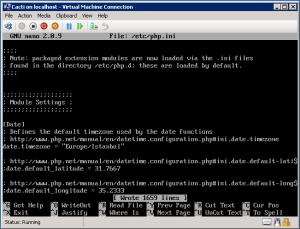
We finished Cacti installation. Now go to your web browser and connect to http://yourserverip/cacti.
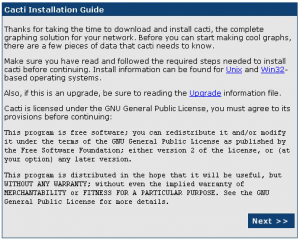
Choose “New Install” and click next.
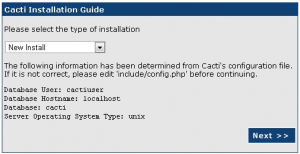
Correct RRDTool default path.
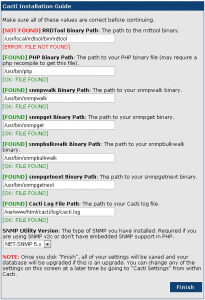
Now Cacti is online!
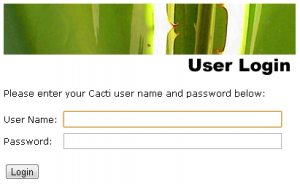
You can login to Cacti with default username and password. After your first login, you should change password.
After MySQL installation, first we should set MySQL root password.
1 2 | mysqladmin --user=root password p@ssw0rd! mysqladmin --user=root --password reload |

Let’s download latest Cacti release.
1 2 | cd /home wget http://www.cacti.net/downloads/cacti-0.8.7g.tar.gz |

Untar tar ball.
1 2 | tar -zxvf cacti-0.8.7g.tar.gz cd cacti-0.8.7g |

Create the MySQL database for Cacti. You have to type your root password to create database.
mysqladmin --user=root create cacti --password |

Import the default Cacti database.
mysql -u root -p cacti < cacti.sql |

Create a MySQL username and password for Cacti for security reasons.
1 2 3 4 | mysql -u root -p mysql GRANT ALL ON cacti.* TO cactiuser@localhost IDENTIFIED BY 'cactipass!'; flush privileges; exit |

Edit “include/config.php” and specify the database type, name, host, user and password for your Cacti configuration.
nano include/config.php |
$database_type = “mysql”;
$database_default = “cacti”;
$database_hostname = “localhost”;
$database_username = “cactiuser”;
$database_password = “cactipass!”;
$database_default = “cacti”;
$database_hostname = “localhost”;
$database_username = “cactiuser”;
$database_password = “cactipass!”;

Move Cacti files into /var/www/html for web access.
1 2 | cd /home mv /home/cacti-0.8.7g /var/www/html/cacti |

Go into Cacti directory and set the appropriate permissions for graph/log generation.
1 2 | cd /var/www/html chown -R apache:apache cacti |

Add a line to your ”/etc/crontab” file.
nano /etc/crontab |
*/5 * * * * cactiuser /usr/bin/php /var/www/html/cacti/poller.php > /dev/null 2>&1

Disable SeLinux to web restrictions.
nano /etc/sysconfig/selinux |
SELINUX=disabled

Reboot your server to apply changes. After reboot, go to php.ini configuration and change timezone.
nano /etc/php.ini |
date.timezone = “Europe/Istanbul”

We finished Cacti installation. Now go to your web browser and connect to http://yourserverip/cacti.

Choose “New Install” and click next.

Correct RRDTool default path.
RRDTool Binary Path: /usr/local/rrdtool/bin/rrdtool

Now Cacti is online!

You can login to Cacti with default username and password. After your first login, you should change password.
username: admin
password: admin
Now you can start adding your graphs :)password: admin

Tidak ada komentar:
Posting Komentar